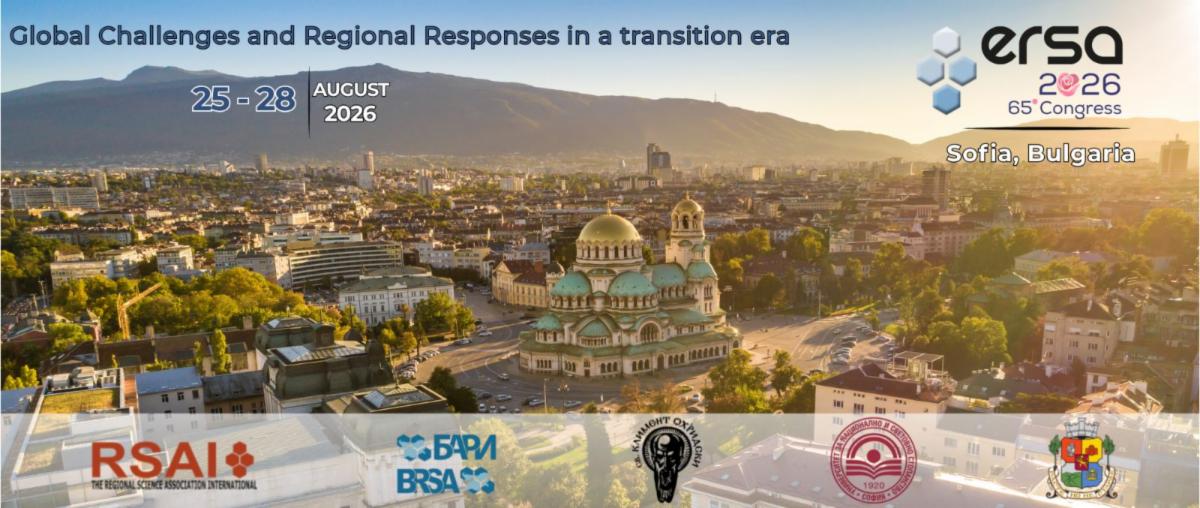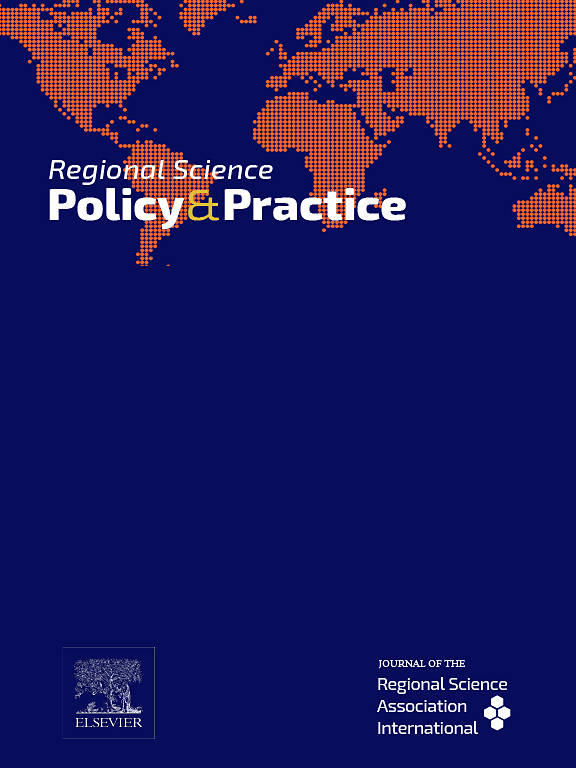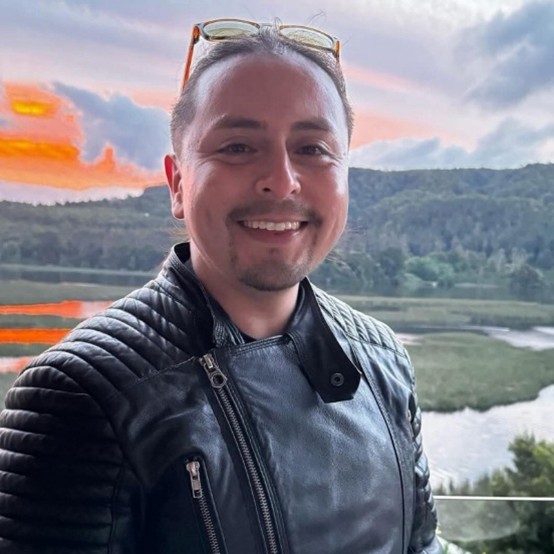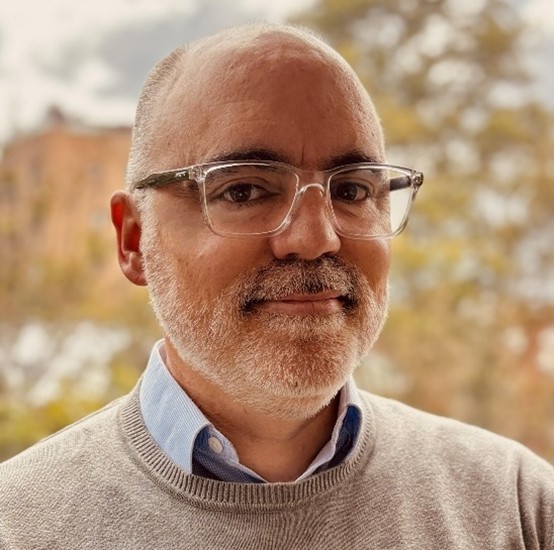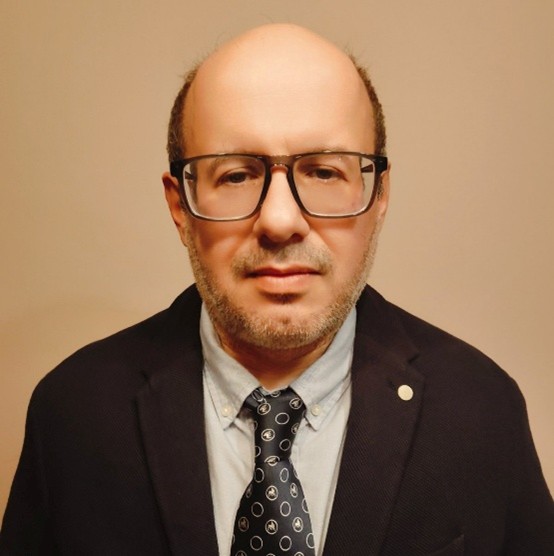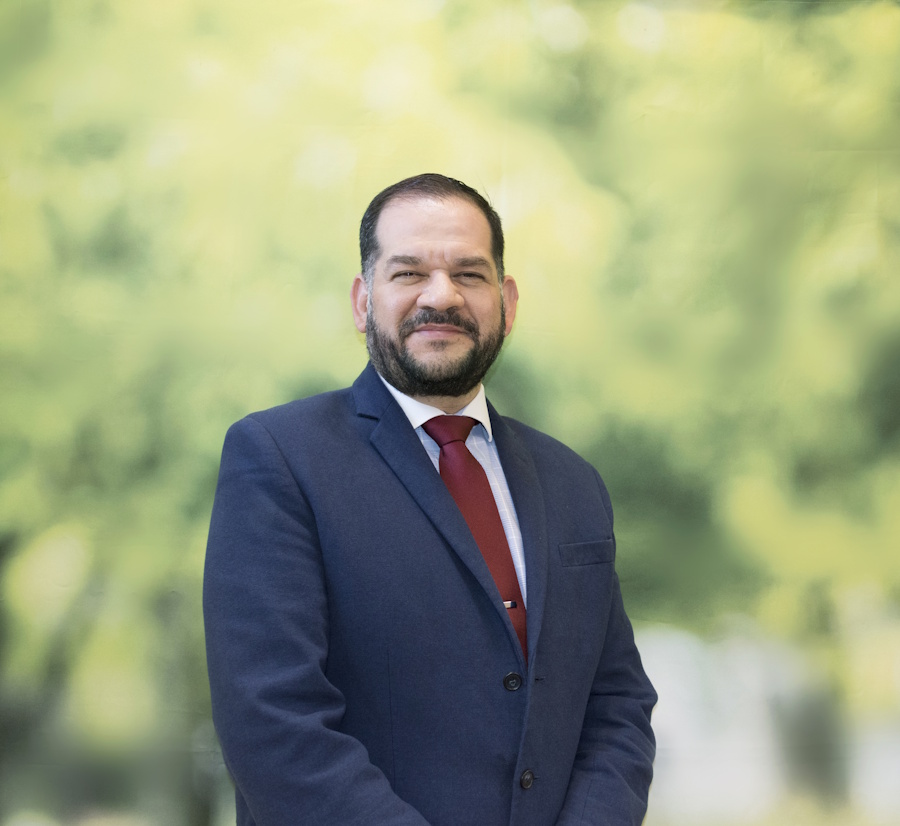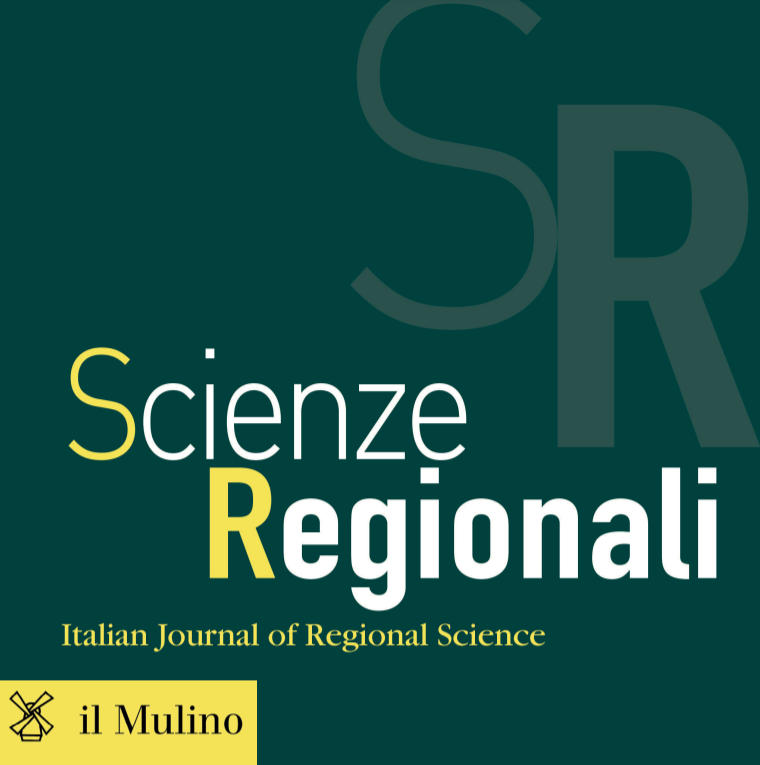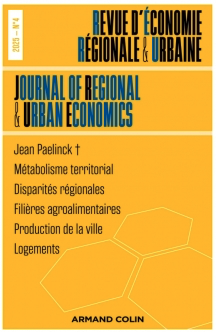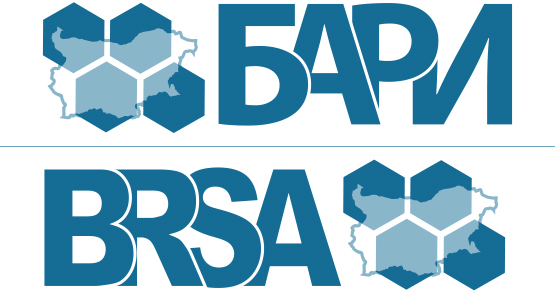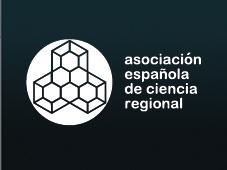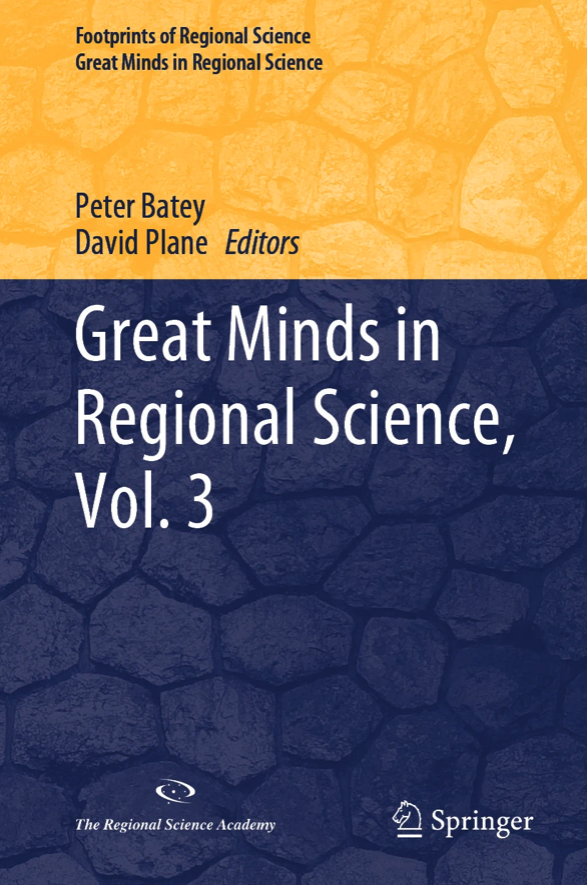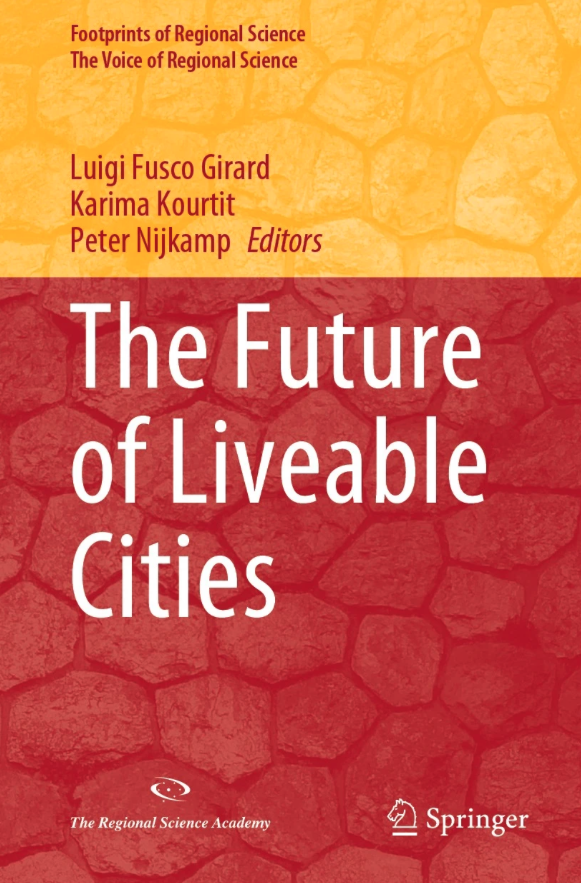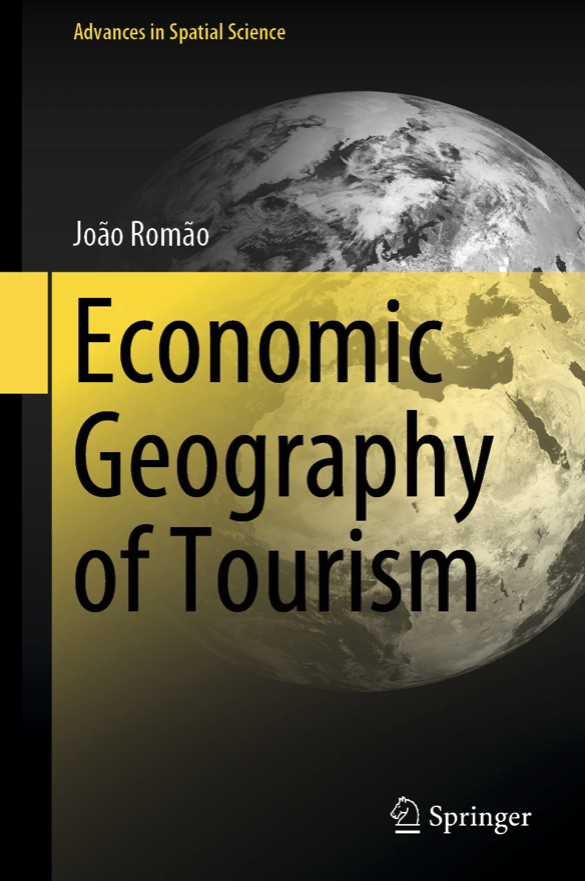Elisabete Martins
New RSAI Section called "ERSA Serbia"
Dear RSAI members
We are delighted to announce the official creation of a new RSAI Section called "ERSA Serbia". The application was accepted during the ERSA 2025 conference and officially approved in the NARSC 2025 conference.
This new incorporation into the ERSA and RSAI community will enable deeper engagement and stronger connections within Europe and also with the global Regional Science community.
Best regards
Dr Ana Viñuela
RSAI Executive Director
Associate Professor, Applied Economics Department
REGIOlab, University of Oviedo, Spain
European Project EXIT (https://www.exit-project.eu/)
#ERSA2026 Call for Special Session Proposals is still OPEN! Don't miss this opportunity!
|
New Issue: Regional Science Policy & Practice | Volume 17, Issue 11, November 2025
|
|
Articles
|
|
|
|
|
|
|
|
|
Book Reviews
|
|
|
Winner of 2025 RSAI Dissertation Award
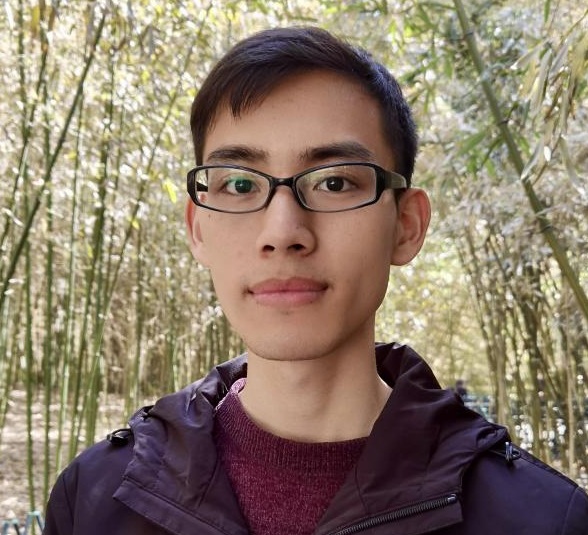
Zhiwu Wei is chosen the 2025 winner of the RSAI Dissertation Award for his PhD dissertation "Empirical Essays on Spatial Inequality".
The dissertation engages with one of the most pressing issues in contemporary Regional Science and makes an outstanding contribution, engaging with relevant theoretical work as well as robustly applying a range of quantitative and causal inference methods across multiple empirical contexts and countries. The research results are clearly presented and rigorously discussed in light of the current literature, demonstrating a deep understanding of both theory and empirical evidence. The dissertation provides novel insights into the causes and consequences of spatial inequality in both Global and Global South contexts. The findings provide valuable implications for place-sensitive policy design, particularly in addressing inequality and fostering inclusive regional development. Among the key findings of the dissertation is the identification of the causal impact of exposure to urban density during a person’s “impressionable years” on outcomes later in life, suggesting that more time in urban areas during these years makes respondents more supportive of immigrants and gender equality later in life. The dissertation also presents a new measure of spatial inequality for regions in Global South countries and examines its association with georeferenced social protests. The analysis suggests that regions with higher levels of spatial inequality experience more frequent protests. The research also examines the extent to which the Brexit vote triggered polarization in economic expectations and spending intentions between pro- and anti-Brexit voters and identifies strong polarization effects between these two groups. Another key highlight of the research is the analysis of the impact of the Brexit vote on regional aggregate consumption suggesting divergence in consumption of automobiles and housing transactions between regions with different shares of leave voters. Overall, the dissertation represents an extremely high-quality, relevant, and impactful contribution to the field of Regional Science and beyond.
Dr Wei was awarded his PhD (viva passed with no corrections) in Land Economy from the University of Cambridge in October 2024. He was supervised by Dr Davide Luca.
New 2027-2028 RSAI President elected: Prof. Janet Kohlhase
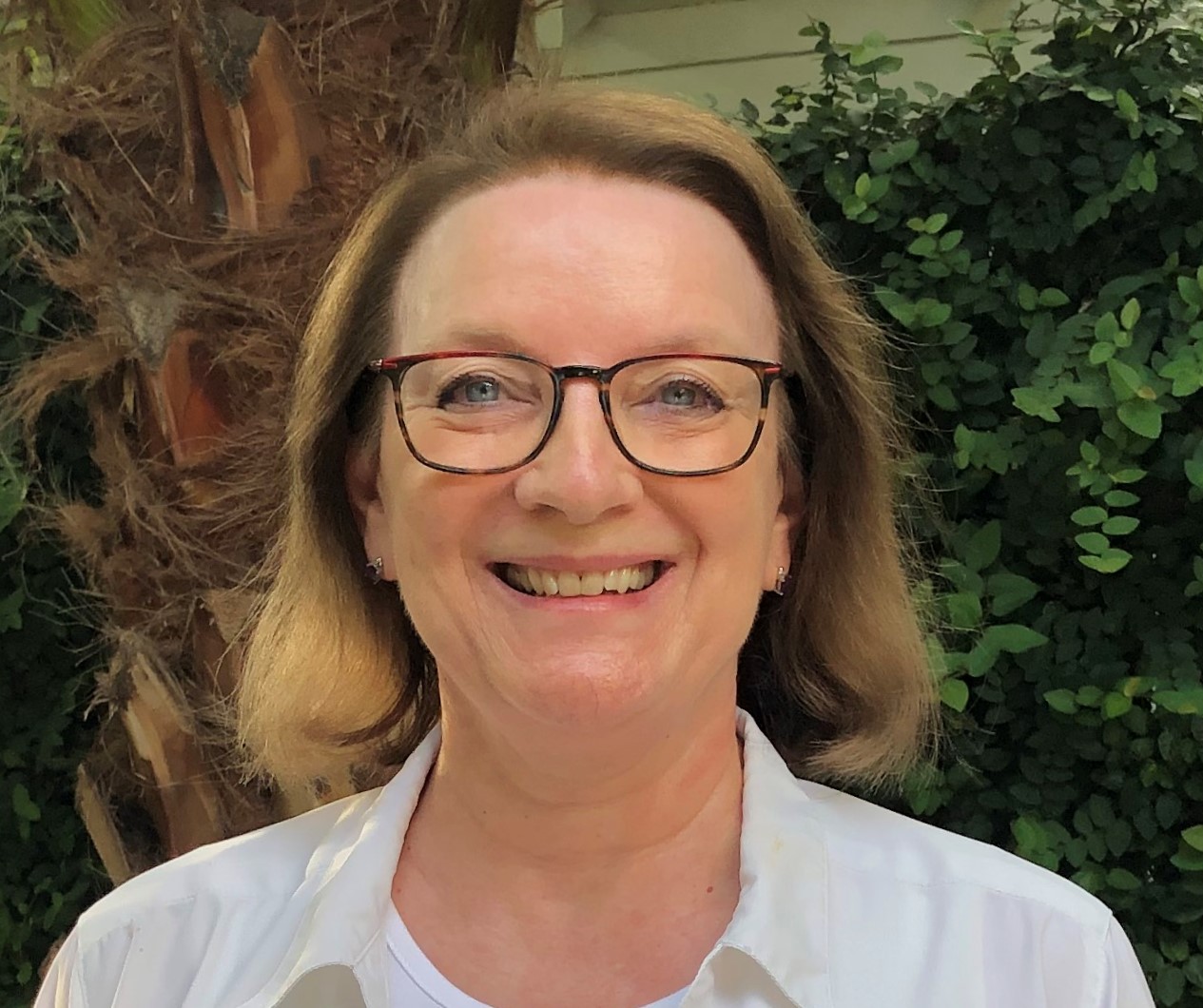 RSAI is excited to announce the appointment of Prof. Janet Kohlhase as the new President for the 2027-2028 term. She is from the Department of Economics at the University of Houston, US.
RSAI is excited to announce the appointment of Prof. Janet Kohlhase as the new President for the 2027-2028 term. She is from the Department of Economics at the University of Houston, US.
Congratulations! In 2026, she will assume the role of President-Elect and collaborate with Prof. Hiroyuki Shibusawa, the current RSAI President, to transition into the President position in 2027.
New LARSA and ERSA representatives (2026-2028) in the RSAI Council
New LARSA and ERSA representatives (2026-2028) in the RSAI Council
|
LARSA Representatives (2026-2028) |
ERSA Representative (2026-2028) |
|||||
|
Mauricio Oyarzo (University of Concepción (UdeC), Chile) |
Enrique Gilles (Colegio de Estudios Superiores de Administración, Colombia) |
Dimitris Kallioras (University of Thessaly, Greece)
|
||||
The Council warmly thanks the LARSA and ERSA representatives ending their term for their service:
Patricio Aroca, Universidad Nacional Andrés Bello, Chile
Carlos Azzoni, University of São Paulo, Brazil
Eveline Van Leeuwen, Wageningen University, Netherlands
Italian Section: Call for papers | AISRE XLVII Annual Scientific Conference, 24-26 June 2026, Florence, Italy

REGIONS BETWEEN INNOVATION AND SUSTAINABILITY:
THE CHALLENGES FOR DEVELOPMENT POLICIES
Florence, June 24-26, 2026
The Italian Association of Regional Science (A.I.S.Re), the Italian section of the Regional Science Association International (RSAI), announces its 47th Annual Scientific Conference.
The conference, which welcomes contributions from national and international scholars across a variety of disciplines related to regional science, will be held at the Dipartimento di Scienze per l’Economia e l’Impresa, Università di Firenze, Polo delle Scienze Sociali di Novoli (Address: Via delle Pandette 9, 50127 Firenze).
The main theme of the conference will be exploring how territories can face the profound economic, social, and environmental transformations currently underway. Innovation and sustainability today represent inseparable dimensions of regional development: on the one hand, technological and organizational innovation opens new opportunities for growth; on the other, environmental and social sustainability requirements set essential constraints and goals for the future of local communities.
Digital and organizational innovation is reshaping production systems and labor markets. New technologies offer the potential to increase the competitiveness of regions, improve access to advanced services, and stimulate diversification processes. At the same time, however, they generate new challenges for employment and social cohesion. Automation, artificial intelligence, and new work models are transforming the skills required, increasing the risk of inequalities between territories and social groups. Social sustainability, therefore, requires that these processes be accompanied by targeted policies for training, inclusion, and the strengthening of local capacities.
At the same time, environmental sustainability is an essential condition for the future of territories. Climate change, the energy transition, and the shift toward circular production models are redefining regional development paths. Companies are called upon to reorganize supply chains, processes, and governance models, facing the costs of reconversion and operating in a context of tensions related to tariffs, trade barriers, and geopolitical risks that can alter policy priorities and reshape the timing and nature of international cooperation. At the same time, opportunities are emerging through the creation of new sectors and “green” jobs, which require policies capable of guiding and supporting these transformations, balancing economic growth, social inclusion, and environmental protection.
In this context, public policies play a decisive role in strengthening the ability of territories to adapt, innovate, and reduce inequalities—reconciling economic development, social cohesion, and ecological transition. The conference aims to foster an open and interdisciplinary debate on how to rethink regional development policies in light of the challenges posed by innovation and sustainability, contributing to shaping visions and strategies for a fairer and more resilient future.
Besides the main theme, the A.I.S.Re conference encourages discussion on the major topics in regional science. Thus, A.I.S.Re invites all those interested to present original scientific works on the following themes:
A. Governance, regional and territorial public policies, European programming
B. Growth, decline, and regional disparities
C. Globalization, value chains and local production systems
D. Methods of territorial analysis and spatial econometrics
E. Labor, welfare, personal services and social policies
F. Tourism, culture and local development
G. Urban planning, real estate market and city development processes
H. Infrastructure, transport, mobility and local development
I. Wellbeing, sustainability, and local development
L. Urban development and agglomeration economies
M. Development and local entrepreneurship
N. Innovation, creativity and local development
O. Policy evaluation methods
HOW TO JOIN THE ASSOCIATION CONFERENCE
There are two ways to participate in the Conference:
- With the organized sessions. Participants can propose themselves as session organizers (no more than two sessions per organizer) on specific themes. The proposal can be submitted directly from the login area of the website, by entering the name of the scientific manager, the session title, and the tentative number of presentations. The deadline for the submission is December 5, 2025.
- with individual papers. Those interested should submit an abstract by January 15, 2026, directly from login area of the website. The detailed instructions for presenting authors on the editing of papers are available at the conference website (link here).
IMPORTANT DEADLINES
| December 5, 2025 | Deadline for proposing organized sessions |
| January 15, 2026 | Abstract submission |
| February 5, 2026 | Paper acceptance |
| March 22, 2026 | Early bird registration |
| April 15, 2026 | Registration (full fee) |
| May 7, 2026 | Papers and presentations submission |
| May 22, 2026 | Programme publication on the website (www.aisre.it), based on payed registrations. |
AWARDS
AISRe promotes the diffusion of studies in regional science by awarding young scholars with:
• Best PhD Dissertation Award
• Best young scholar paper
The call for candidatures and their instructions are available on A.I.S.Re. website. The deadline for the application is March 3, 2026.
CONFERENCE REGISTRATION AND MEMBERSHIP
Registration and participation in the Conference is subject to A.I.S.Re. membership, as individual, corporate or young member, available in the login area. The membership in the Italian Association of Regional Science will be valid for the 2026/2027 social year. Registration and membership fees are available at this link. A.I.S.Re. membership benefits include:
- the subscription to Scienze Regionali (Il Mulino) for the following calendar year;
- the volume of the AISRe E-book (Donzelli Editore);
- the registration to the Regional Science Association International (RSAI), which includes an online subscription to the journal Papers in Regional Science and Regional Science Policy and Practice, for the following calendar year, the opportunity to pay a reduced fee at the Annual Conferences of the European Regional Science Association (ERSA) and the Regional Science Association International (RSAI).
- Young scholars have also the opportunity to participate to the Summer/Winter Schools of AISRe.
Local Organising Committee
- Annalisa Caloffi, Università degli Studi di Firenze (Chair)
- Mario Biggeri, Università degli Studi di Firenze
- Marco Bellandi, Università degli Studi di Firenze
- Francesco Capone, Università degli Studi di Firenze
- Stefano Clò, Università degli Studi di Firenze
- Andrea Ferrannini, Università degli Studi di Firenze
- Lucia Ferrone, Università degli Studi di Firenze
- Niccolò Innocenti, Università degli Studi di Firenze
- Federico Martellozzo, Università degli Studi di Firenze
- Stefania Oliva, Università degli Studi di Firenze
- Maria Grazia Pazienza, Università degli Studi di Firenze
- Filippo Randelli, Università degli Studi di Firenze
- Giorgio Ricchiuti, Università degli Studi di Firenze
Scientific Commitee
- Mario Biggeri, Università degli Studi di Firenze
- Marco Bellandi, Università degli Studi di Firenze
- Annalisa Caloffi, Università degli Studi di Firenze
- Giulio Cainelli, Università degli Studi di Padova
- Francesco Capone, Università degli Studi di Firenze
- Stefano Clò, Università degli Studi di Firenze
- Andrea Ferrannini, Università degli Studi di Firenze
- Lucia Ferrone, Università degli Studi di Firenze
- Niccolò Innocenti, Università degli Studi di Firenze
- Federico Martellozzo, Università degli Studi di Firenze
- Marco Modica, Gran Sasso Science Institute
- Stefania Oliva, Università degli Studi di Firenze
- Maria Grazia Pazienza, Università degli Studi di Firenze
- Eleonora Pierucci, Università degli Studi Roma Tre
- Filippo Randelli, Università degli Studi di Firenze
- Giorgio Ricchiuti, Università degli Studi di Firenze
Executive Board A.I.S.Re.
- Stefano Aragona, INBAR Sezione Lazio
- Giulio Cainelli, Università degli Studi di Padova
- Annalisa Caloffi, Università degli Studi di Firenze
- Andrea Caragliu, Politecnico di Milano
- Viviana Celli, Università di Roma La Sapienza
- Augusto Cerqua, Università di Roma La Sapienza
- Camilla Lenzi, Politecnico di Milano
- Marco Modica, Gran Sasso Science Institute
- Eleonora Pierucci, Università degli Studi Roma Tre
- Pietro Pizzuto, Università degli Studi di Palermo
- Paolo Postiglione, Università degli Studi “G. d’Annunzio” Chieti-Pescara
- Domenico Scalera, Università del Sannio
- Lisa Sella, IRCrES-CNR – Istituto di Ricerca sulla crescita economica sostenibile
- Daniela Storti, Consiglio per la ricerca in agricoltura e l’analisi dell’economia agraria (CREA)
- Gaetano Vecchione, Università degli Studi di Napoli Federico II.
Secretary AISRe
Diana Sarmiento, This email address is being protected from spambots. You need JavaScript enabled to view it.
New Councillor at large elected
During the month of October, RSAI members voted for the election of new Councillor at large on the RSAI Council. The following candidate was eventually elected:
|
Prof. Rafael Garduño-Rivera (School of Economics & Business, University of Navarra, Spain) |
Many congratulations to our new colleague! He will start their new term on Jan. 1, 2026.
At the same time, the Council warmly thanks the Councillor at large ending her term (Prof. Daniela Luminita-Constantin (Bucharest University of Economic Studies)) for her service.
ERSA Monthly E-news - October 2025
|
|||||||||||||||||||||||||||||||||||||||||||||||||||||||||||||||||||||||||||||||||||||||||||||||||||||||||||||||||||||||||||||||||||||||||||||||||||||||||||||||||||||||||||||||||||||||||||||||||||||||||||||||||||||||||||||||||||||||||||||||||
|
|||||||||||||||||||||||||||||||||||||||||||||||||||||||||||||||||||||||||||||||||||||||||||||||||||||||||||||||||||||||||||||||||||||||||||||||||||||||||||||||||||||||||||||||||||||||||||||||||||||||||||||||||||||||||||||||||||||||||||||||||
Call for Chapters | Spatial Intelligence: Designing Composite Indexes through Geocomputation - Principles, Methods, Challenges, and Solutions | Publisher: CRC Press (Taylor & Francis Group)
Call for Chapters
Publisher: CRC Press (Taylor & Francis Group)
Title: Spatial Intelligence: Designing Composite Indexes through Geocomputation - Principles, Methods, Challenges, and Solutions
Editors:
- Dr. Hamid Rabiei, School of History and Geography, Dublin City University (DCU)
- Dr. Matheus Pereira Libório, Montes Claros State University
- Professor Chris Brunsdon, Department of Geography, Maynooth University
Contact: This email address is being protected from spambots. You need JavaScript enabled to view it.
About This Book
Spatial composite indexes are crucial for synthesizing complex, multidimensional data into a single, interpretable value, making them indispensable in various fields, including urban planning, environmental management, and public health. In today's data-driven world, geocomputation has become an essential tool for extracting valuable insights from spatial data. This book with CRC Press (Taylor & Francis Group) will explore the core principles, methods, and real-world applications of spatial composite indexes, offering a comprehensive guide to
advanced spatial analysis.
This book is being written to address the significant challenges in designing and applying spatial composite indexes, from data heterogeneity and scale issues to the complexity of integrating multiple variables. The process can be daunting even for experienced geocomputation
practitioners, with obstacles including data availability and quality, variable selection, weighting and aggregation methods, spatial autocorrelation, and modifiable areal unit problems (MAUP).
The book will be written as a structured learning resource with step-by-step guides to principles and methods for constructing spatial composite indexes, enriched with real-world case studies. It will provide detailed explanations of advanced geocomputation tools and techniques,
practical exercises, and examples to solidify understanding while highlighting cutting-edge challenges and delivering actionable solutions.
Call for Chapter Contributions
We invite scholars, researchers, and practitioners to contribute chapters to this comprehensive edited volume. We are seeking original, high-quality contributions that advance the field of spatial composite index design and geocomputation.
Submission Guidelines Chapter Requirements:
- Length: 3,000-5,000 words (including references)
- Format: Academic chapter format with clear structure
- Content: Original research, comprehensive reviews, or innovative methodological approaches
- Case Studies: Real-world applications and examples strongly encouraged
- Technical Content: Include practical examples, code snippets, or methodological frameworks where appropriate
What We're Looking For:
- Theoretical Contributions: Novel frameworks or conceptual advances
- Methodological Innovations: New approaches to spatial composite index design
- Practical Applications: Real-world case studies demonstrating implementation
- Technical Solutions: Software tools, platforms, or computational approaches
- Critical Analysis: Examination of challenges and limitations in current practices
- Future Perspectives: Emerging trends and research directions
Submission Process:
- Abstract Submission: Submit a 500-word abstract outlining your proposed chapter
- Full Chapter: Upon acceptance of abstract, submit complete chapter
- Peer Review: All chapters will undergo rigorous peer review
- Revision: Authors may be asked to revise based on reviewer feedback
Important Dates
- Abstract Submission Deadline: 30 January 2026
- Full Chapter Submission: 30 July 2026
- Review Completion: 30 October 2026
- Final Manuscript Submission: 30 December 2026
- Expected Publication: ~31 July 2027
Target Audience
This book is designed for:
- Graduate students and researchers in geography, urban planning, and environmental studies
- GIS professionals and spatial analysts
- Policymakers and practitioners working with spatial data
- Software developers creating geospatial applications
- Anyone interested in advanced spatial analysis and composite index construction
How to Submit
Please send your abstract and a brief biographical note to:
Dr. Hamid Rabiei
School of History and Geography Dublin City University (DCU)
Email: This email address is being protected from spambots. You need JavaScript enabled to view it. Include in your submission:
- Chapter title and proposed chapter number
- 500-word abstract
- Brief author biography (150 words)
- Institutional affiliation and contact information
- Any relevant previous publications or experience
Questions?
For questions about the book project, chapter requirements, or submission process, please contact the editorial team at: This email address is being protected from spambots. You need JavaScript enabled to view it..
We look forward to receiving your contributions to this important volume on spatial intelligence and composite index design through geocomputation.
See full call: Call_for_Chapters_-_Spatial_Intelligence.pdf
About Us
The Regional Science Association International (RSAI), founded in 1954, is an international community of scholars interested in the regional impacts of national or global processes of economic and social change.



